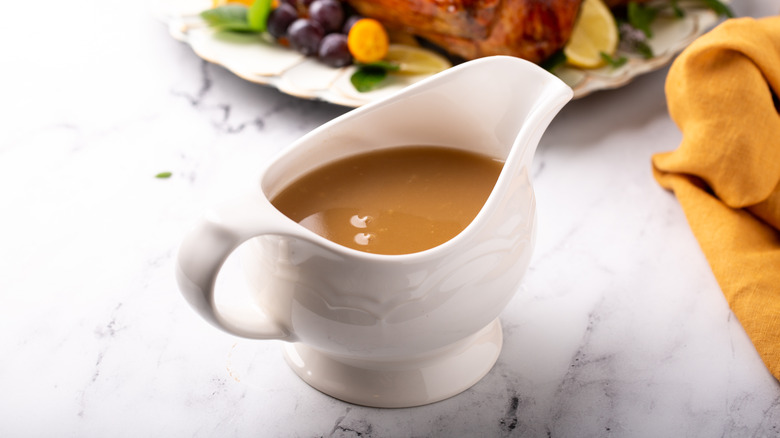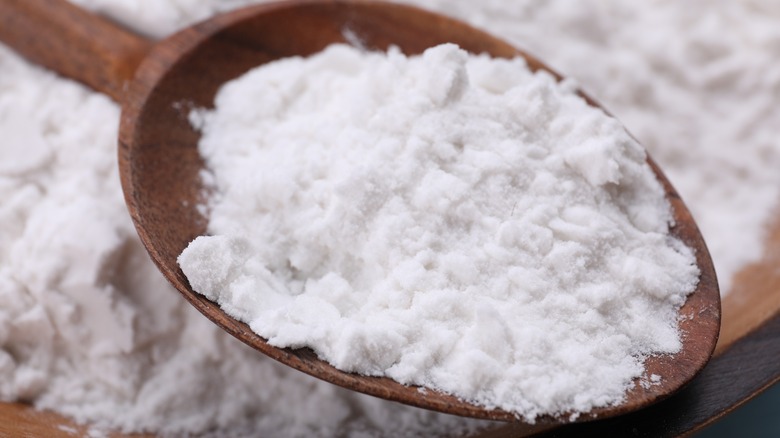For Thicker Gravy Without Using Flour, Reach For Cornstarch
Not to sound corny, but cornstarch is something of a magic secret ingredient. If you're smart, you've got a tub of the stuff tucked somewhere in your pantry for pudding purposes and urgent slurry emergencies. A fine powder extracted from corn kernels, cornstarch can firm up whipped cream, crisp up veggies and keep cookies from spreading. To thicken up runny Thanksgiving gravy in a pinch, turn to this trusty carbohydrate.
A thick, silky gravy is an essential component of a balanced holiday table. Plus, a great gravy is a quick fix for the classic harvest table's most controversial centerpiece: the turkey. Cornstarch is a quick and convenient thickening agent. When heated, its starch granules begin to grow as they absorb water.
While you can mix in a little flour to salvage flavorless gravy and make up for lackluster texture, cornstarch is an even more potent thickening agent. Just a small amount of the stuff can boost a runny gravy, while larger amounts of flour would be required to yield the same results. Cornstarch is also gluten-free, making it an especially useful flour substitute.
Tips for thickening gravy with cornstarch
To steer clear of lumps, avoid mixing cornstarch directly into bubbling gravies and sauces. Instead, start by whipping up a simple slurry. A slurry functions similarly to a roux (another process you'll want to keep up your sleeve for richer holiday dishes). However, a roux is a paste of equal parts flour and fat that is used at the start of a recipe, whereas a slurry is a thickening agent of part water, part starch which gets incorporated towards the end. Slurries are great for creating smooth, hearty pasta sauces, too.
One important thing to remember when adding a slurry to your hot gravy is to start the process with your heat source turned off. This helps avert any potential clumping, while still providing the high temperature required for gelatinization. Once you've given the slurried gravy a good stir, you can go back to cooking it (with a watchful eye).
Expect to use two tablespoons each of cornstarch and broth or water for every pint of gravy. Because of cornstarch's powerful thickening properties, it's always smart to start small and add more as you go. Simply stir the slurry into your gravy a little bit at a time and stop once it's thick and glossy enough to garnish your dinner plate.

